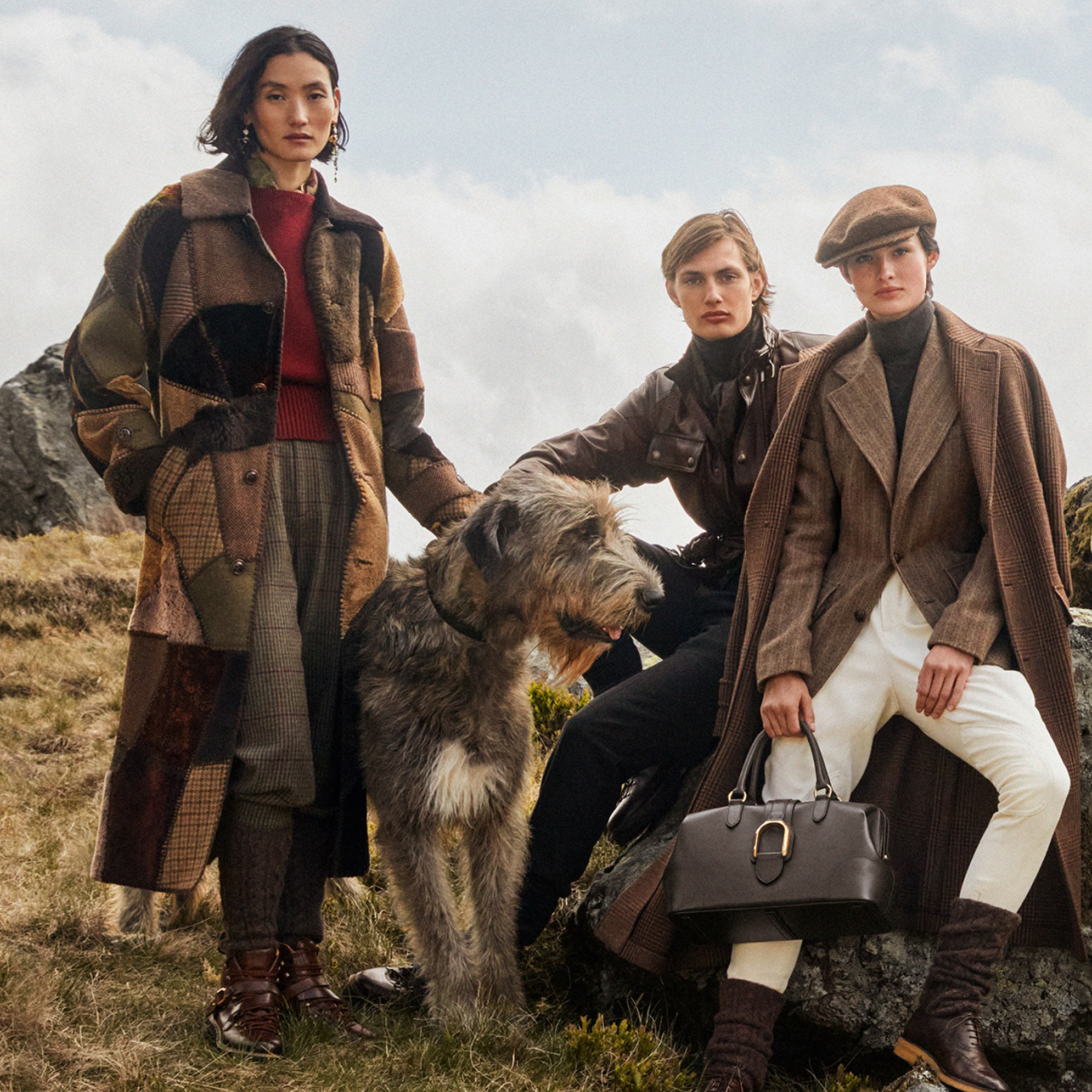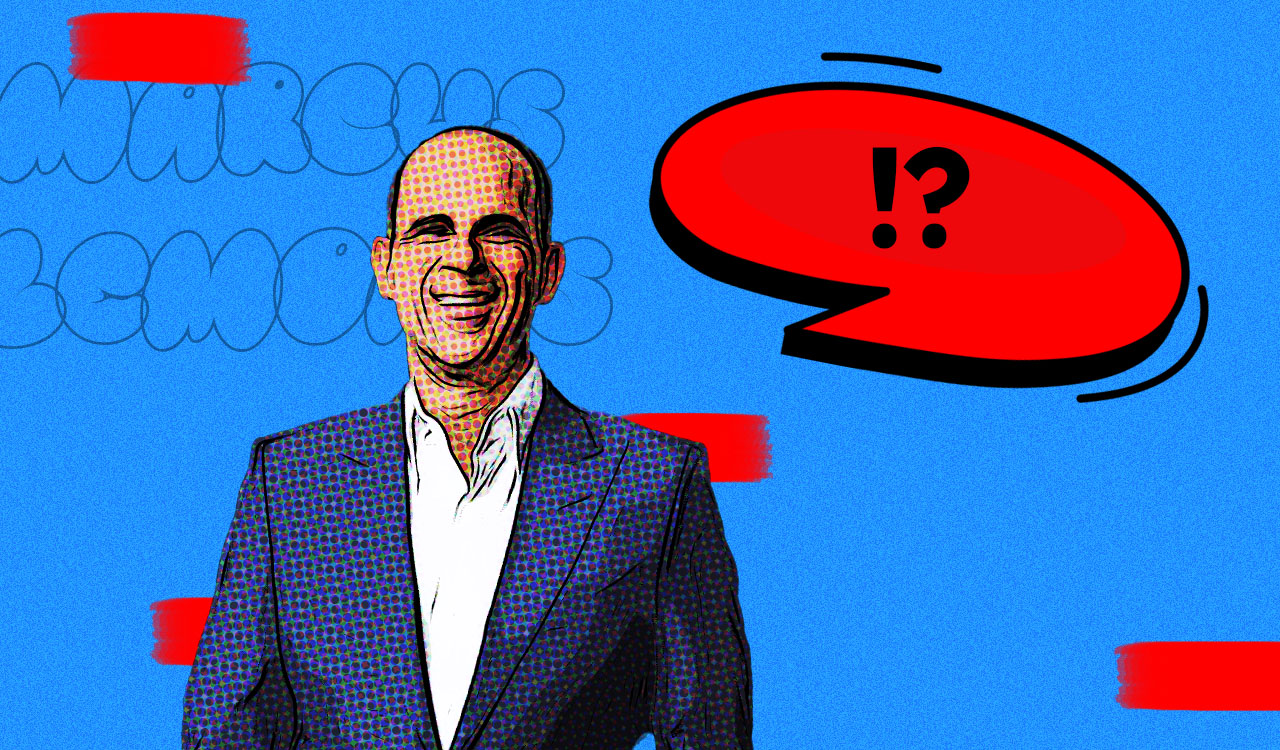“Fashion fades, style is eternal.” This bit of philosophical observation was the final jaw-dropping statement in a 2021 article in The Urban Journal, which opined on Ralph Lauren’s leadership hiccups around 2015. It questioned the brand’s relevance and ability to evolve with the lifestyles of millennial and Gen Z consumers, along with their seamless connection to technology and the internet. The closing statement of that article is all one needs to understand that describes the brand’s ultimate longevity as eternal.
And this was re-echoed by Ralph Lauren’s Chief Product Officer, Halide Alagoz, in their recent investment day meeting, saying, “Timeless style transcends trend. It never goes out of fashion season after season.
The Eternal Flame
Is it my opinion? Short answer: Yes. However, I want to provide my own reasoning. That said, I felt compelled to open with Urban’s final statement, which is absolutely a universal full stop summation of the brand’s resilience and strength. Indeed, “style is eternal.” And Ralph created his own branded lifestyle over half a century ago; it was his dream of a Gatsby-like world that could only be envisioned by photographic images of Gatsby-like settings and models living inside the dream –a dream that like-minded customers want to be part of.
So, Ralph is not a designer of apparel or other products. He is a creator of dreams that reflect a style of living that is uniquely his own vision. And all his products, from pants to paint, and everything else that fits into his unique worldview, as immortalized in his ads and imagery, become indelible and eternal.
The Loss of a Left-Brain Sensibility
In 2015 I saw the beginning of a “perfect storm” heading towards the brand. My headline asked, “Does Ralph Lauren See the Perfect Storm?” The three storm fronts colliding to become the killer perfect storm started with the departure of its then-CEO Roger Farah. I believe he was arguably, the best strategist, operating and business executive that Mr. Lauren ever had, and his departure was one of the major catalysts for the decline in Lauren’s sales and profits at the time. In my opinion, Farah was Lauren’s left brain.
The second storm front was the full-on effects of the internet, new technologies and globalization. These disruptions were being uber-powered by the third storm, which was the largest and most powerful emerging consumer culture since the boomer generation: the millennials and Gen Zs.
Regarding the loss of Farah as the brand’s left brain, Lauren believed he found Farah’s ideal replacement. He made the incredibly surprising decision to hire 40-year-old Stefan Larsson, then President of Old Navy. Apparently, Lauren believed that Larsson’s successful 15-year run as head of global sales for H&M, followed by his three-year stint as head of Old Navy (making it Gap Inc.’s sole growth engine), would fill the role of Farah’s left-brain expertise. It didn’t happen.
In less than two years, Ralph Lauren experienced a 5.4 percent decline in sales in the first quarter of the 2016 fiscal year, coupled with a 60 percent drop in net income. Earnings before interest, tax, depreciation, and amortization fell from 20 percent of revenues in its 2013 fiscal year to an estimated 15.5 percent in 2016.
Upon announcing Larsson’s departure, Ralph Lauren said, “Stefan and I share a love and respect for the DNA of this great brand, and we both recognize the need to evolve, however, we have found that we have different views on how to evolve the creative and consumer-facing parts of the business.” So, Ralph’s judgment errored in favor of another right brain, which the Ralph Lauren brand did not need.
A New Left-Brain Partner and a Fortress
Patrice Louvet took the helm in July 2017, bringing with him, the badly needed strengths of left brain thinking. Inheriting Larsson’s dilutive missteps, Louvet needed to stabilize the short-term challenges and begin to enact a longer-term strategic plan. He has been successful in playing this plan out over the past four years (even powering through the unprecedented and unexpected pandemic). He coined the long-term strategy as The Fortress Foundation. Louvet and team have now reviewed its successes over the past four years and how they will be accelerated going forward. Unity Marketing posted the following strategic accomplishments.
Younger, Higher-Value Customers
Since 2018, the company has brought in 20 million new higher-value and younger direct-to-consumer customers. That includes a 38 percent increase in full-price DTC customers since 2019 alone, and they are active with one in four having shopped RL in the past year.
Brand aspiration is on the upswing with 74 percent of consumers now considering RL a luxury brand, and it’s the top pick in brand consideration among next-generation consumers over a set including Calvin Klein, Tommy Hilfiger, Lacoste, Burberry, and Gucci. Consumers are drawn to the timeless quality of the brand, as compared with the others.
RL has an advantage with the next-generation customers it’s cultivated – one in three U.S. consumers grew up wearing Ralph Lauren. This extends their projected lifetime value if they stay with the brand. And it can succeed if it continues to deliver greater value for money, which grew 7 points since 2020.
Repositioned Retail
RL has completely restructured its retail network over the past four years. Most significantly, it has pulled out of two-thirds of its low-value North American wholesale accounts and cut exposure in off-price retail by 50 percent to return that channel to being a “true vehicle for liquidation,” said Bob Ranftl, regional CEO North America.
That move, along with its acquisition of more high spenders, has resulted in a 64 percent increase in average-order size. Also noted is that multi-channel customers spend four times more.
It’s added 450 full-price stores and concessions globally since 2018 which includes a variety of formats, including flagship stores and smaller footprint stores under 10,000 square-feet. It now reports that direct-to-consumer business accounts for 63 percent of revenue. Plans are to open 250 new stores over the next three years, including 200 in Asia, 40 to 50 in Europe and 15 to 20 in North America.
Asia is going to be a big focus of retail expansion in the next three years across both stores and its digital ecosystem. Its China strategy will be clustered in six major cities: Beijing, Shanghai, Chengdu, Shenzhen, Hong Kong, and Taipei.
Its North American outlet stores are getting a special treatment too. In many places, these are customers’ local RL store, and the aim is to allow these value-oriented customers to also engage with the luxury of Ralph Lauren. “We’re elevating that physical environment. We’re elevating the product presentation, the assortment, the service model. When the consumer walks into that store, we want them to feel inspired,” Ranftl explained.
Robust Digital Ecosystem
“We believe connected retail is the future, “ declared Janet Sherlock, chief digital and technology officer. “This is a major unlock for us because it gives us the flexibility to engage with our customers where they are, especially next-gens. It’s where they’re getting their inspiration or choosing to transact,” as she described the digital ecosystem than undergirds the company’s operations.
Sherlock reported that digital has over-delivered on its promises from last investor’s day. It’s added over $1 billion in revenue (20 percent CAGR), against promised $500 million. Digital penetration has doubled, and operating margins increased by 850 basis points.
All told, digital sales now generate 26 percent of company revenues, including RL’s owned and operated site, partnerships with digital pure plays, like Asos, Farfetch and Mr. Porter and its wholesale.com offering.
Through 2025, it expects digital to reach one-third of company revenues on low-to-mid-teens CAGR. It will leverage digital for international expansion, build out its home business, expand social commerce and its app and grow into the metaverse with digital goods and NFTs.And with its deep reserves of customer data, it will use AI to anticipate needs, customize local product assortments and personalize clienteling.
With the aim of connected retail to “create experiences that transverse physical, digital and virtual worlds,” Sherlock sees the potential for new revenue streams as the metaverse becomes a reality.
Classic, Timeless Luxury
RL’s return to core classics will be a key driver to extend customers’ lifetime value. Consumers are looking for products as investments with value that accrues over time, Alagöz said. Currently, 70 percent of revenues derive from its classic core product offerings along with seasonal color iterations of those classics. At the same time, it’s bringing that timeless, classic approach into new categories like outerwear, which now generates nearly 10 percent of revenues.
Home has also gotten the classic treatment, which grew 50 percent over last year and extends beyond linens and bedding into furniture, dining, rugs, lighting, decorative accents, and giftware.
Its women’s business is targeted for special attention as the RL brand is underpenetrated in her closet. Women currently make up the majority of customers (56 percent), buying across many different categories, while women’s apparel accounts for less than 30 percent of the RL business. The company sees handbags and accessories as an important lead into the women’s fashion market, fitting its timeless creed. And it can dress her for every occasion from weekend to weekday, sporty to casual, even special occasions. Its women’s business is expected to deliver low double-digit growth through 2025, with the Polo for women brand leading the charge. “The consumers can leverage the breadth of our product with our sweet spot right at the epicenter of elevated casual,” Alagöz affirmed.
The Numbers
Jane Nielsen, COO and CFO, presented the detailed projected numbers: 8 percent constant currency increase for fiscal 2023, followed by mid-to-high single-digit CAGR through 2025. In addition, the company is aiming to raise operating margins north of 15 percent thanks to saving $400 million in cost-of-goods and operating expenses. Marketing spend as a percentage of revenues will be reduced by 7 percent as well.
A Final Note from The Robin Report
You will have noticed that there was no mention of repositioning the “dream,” Ralph’s creation of an aspirational style of life. It was as if Ralph’s right brain was talking to Louvet’s left brain, at the end of the presentation when he said to Louvet, “I’m impressed by the team and by you. You’ve done an amazing job and you put this company in the right place.”
Style can be eternal; it’s the stuff that dreams are made of. And it is fundamentally a right-brain concept. I believe Patrice Louvet is an essential counterbalance to Lauren’s dreamscape business model with the skill to manage the strategic guard rails to eternal growth.




